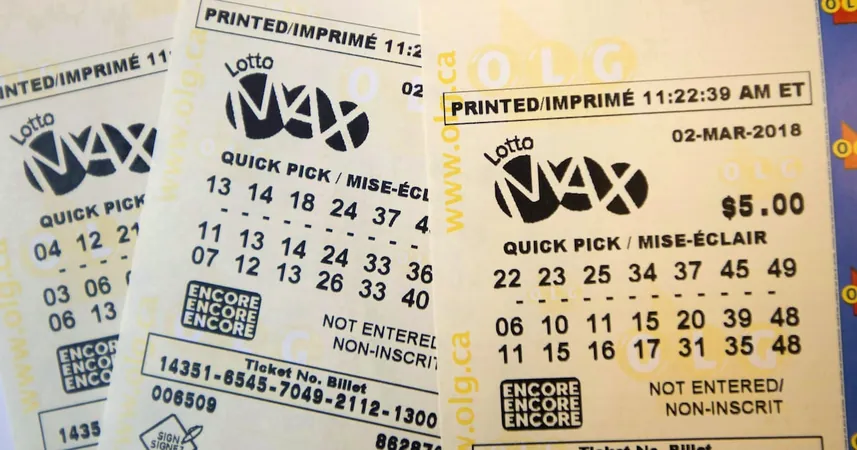
Revolutionizing User Experience: The Power of Server-Driven UI at Netflix
2024-12-26
Author: Olivia
Revolutionizing User Experience: The Power of Server-Driven UI at Netflix
In a recent presentation, Christopher Luu, a member of Netflix's growth engineering team, shared insights into the platform's innovative approach to Server-Driven User Interface (SDUI). This evolution in UI strategy aims to enhance the overall user experience across Netflix's diverse range of devices while addressing various operational challenges.
What is Server-Driven UI?
Server-Driven UI is a paradigm where the server essentially dictates the user interface displayed on client applications. Luu illustrated a spectrum of SDUI implementations—from completely offline applications like calculators to fully server-driven models, such as those utilizing WebView technologies. This approach allows the server to send UI components defined in JSON, enabling rapid updates without the need for users to download new app versions.
Why Choose a Server-Driven Approach?
1. Instant UI Updates: One of the most significant advantages is the ability to update interfaces without resubmission to app stores. This agility is crucial for Netflix, which relies heavily on A/B testing and rapid iteration to optimize user engagement.
2. Code Reusability Across Platforms: By utilizing a common set of components, Netflix can streamline the development process across different platforms, including iOS, Android, and TV, ultimately saving time and resources.
3. Empowerment of Non-Technical Staff: The SDUI framework enables developers unfamiliar with specific platforms to contribute to the UI design by creating interfaces server-side, fostering collaboration and innovation.
However, this paradigm is not without its challenges. Initial architectural costs are high, and there are complexities in maintaining backward compatibility for older app versions. Moreover, building a server-driven UI can complicate support for offline capabilities, as user interaction is often contingent upon a live connection.
Real-World Applications: The Challenge of UMA
A practical case highlighted in Luu's talk was the Universal Messaging Alert (UMA), a project aimed at standardizing alerts across platforms. Initially simple, the requirements for UMA expanded significantly, yielding a comprehensive set of alerts that needed to function seamlessly across various device interfaces. For instance, alerts must inform users of payment failures or promotional offers without flooding them with complexities.
Netflix implemented a component system known as CLCS (Customer Lifecycle Component System), which acts as a wrapper for their design guidelines. CLCS harnesses the flexibility of server-driven UI while ensuring brand consistency across all user interfaces. This system automates many aspects of user interaction and state management, allowing Netflix to effectively cater to a wide range of devices that may not always be up to date.
Innovations and Future Directions
Luu emphasized plans to phase out older messaging systems in favor of the CLCS framework, which allows for greater efficiency and simplicity in user interactions across all platforms. By focusing on the user lifecycle, Netflix can eliminate cumbersome WebView-based processes, enhancing the overall smoothness of navigation within the app.
What's next for Netflix? Continuous improvement of the CLCS will involve migrating legacy alerts to the new system, experimenting with multi-step forms, and addressing offline functionality seamlessly, all while maintaining the integrity of their back-end services.
In Conclusion: Should You Consider SDUI?
Luu acknowledges that the journey toward implementing Server-Driven UI is highly specific to the needs of each organization. While Netflix has leveraged SDUI to enhance user experiences significantly, it may require tailored solutions for others.
As the conversation around user interfaces evolves, Netflix's strategic application of SDUI serves as a pioneer model, demonstrating how technology, when crafted thoughtfully, can transform user engagement across platforms while reducing operational overhead.
Stay tuned as Netflix continues to redefine the streaming experience—innovating at the intersection of technology and storytelling!









 Brasil (PT)
Brasil (PT)
 Canada (EN)
Canada (EN)
 Chile (ES)
Chile (ES)
 España (ES)
España (ES)
 France (FR)
France (FR)
 Hong Kong (EN)
Hong Kong (EN)
 Italia (IT)
Italia (IT)
 日本 (JA)
日本 (JA)
 Magyarország (HU)
Magyarország (HU)
 Norge (NO)
Norge (NO)
 Polska (PL)
Polska (PL)
 Schweiz (DE)
Schweiz (DE)
 Singapore (EN)
Singapore (EN)
 Sverige (SV)
Sverige (SV)
 Suomi (FI)
Suomi (FI)
 Türkiye (TR)
Türkiye (TR)